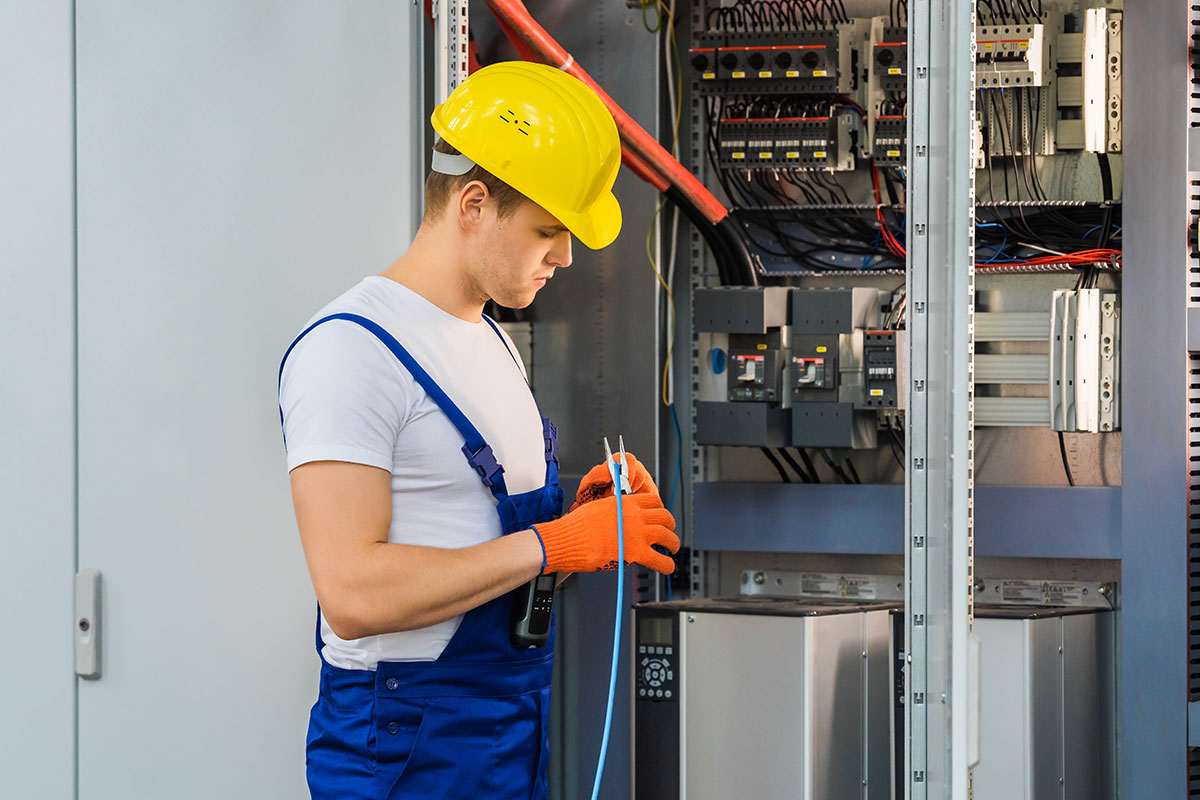Faulty wiring is one of the leading causes of electrical fires, outages, and power surges in homes. Addressing it promptly is essential for maintaining a safe and functional household. However, fixing faulty wiring can be tricky if you’re unfamiliar with electrical systems. Here’s a comprehensive guide to help you troubleshoot and fix basic wiring issues.
Warning: Safety First
Electrical repairs can be dangerous. If you’re unsure of your abilities or the issue seems complex, always call a licensed electrician. Working with live wires poses serious risks, so proper precautions must be taken.
1. Identifying Faulty Wiring
Before fixing wiring, you need to know the signs of a problem:
- Flickering or Dimming Lights: This can indicate a loose connection or an overloaded circuit.
- Burning Smell: If you smell something burning, cut off the power immediately at the breaker and call an electrician.
- Frequent Circuit Breaker Trips: A circuit breaker that frequently trips may indicate a short circuit or overloaded wiring.
- Buzzing or Crackling Sounds: Any unusual noises from switches or outlets can point to faulty wiring.
- Warm or Discolored Outlets/Switches: This could indicate overheating or poor connections.
These signs are red flags. If you notice any of them, it’s time to inspect your electrical wiring.
2. Gather Your Tools
If you’re planning to handle simple repairs, ensure you have the right tools on hand:
- Voltage tester
- Wire cutters/strippers
- Electrical tape
- Screwdrivers (flathead and Phillips)
- Wire nuts
- Pliers
- Electrical box covers
- Insulated gloves
3. Turn Off the Power
Never work on wiring without shutting off the power. Go to your home’s electrical panel and flip the circuit breaker that controls the area you’ll be working on. Use a voltage tester to double-check that the power is off before touching any wires.
4. Inspect the Wiring
Once the power is off, carefully remove outlet or switch covers to check the condition of the wires:
- Loose Wires: Sometimes, wires become loose from their terminals, causing inconsistent electrical flow. This is common in outlets and switches.
- Frayed or Damaged Wires: If you find any wire that is cracked, worn out, or frayed, it should be replaced immediately.
- Old Wiring: Homes with outdated aluminum wiring or cloth-insulated wires need special attention. Consider upgrading to modern copper wiring, which is safer and more durable.
5. Repairing Loose Connections
If the issue is simply loose wiring at an outlet or switch, you can follow these steps to repair it:
- Remove the Device: Unscrew the outlet or switch from the electrical box.
- Tighten or Replace Wires: If wires are loose, re-tighten them or reattach them to the proper terminals. Ensure that the wires are wrapped clockwise around the screws for a secure connection.
- Use Wire Nuts: For spliced wires, ensure that wire nuts are tightly twisted over the exposed ends. If necessary, trim the wire ends and strip off about ½ inch of insulation for a fresh connection.
- Reassemble and Test: Once the wiring is fixed, reassemble the outlet or switch and test it by turning the power back on.
6. Replacing Damaged Wires
If you find damaged wires, you’ll need to replace the faulty section. Here’s how:
- Cut the Power: Always double-check that the power is off.
- Cut Away the Damaged Wire: Use wire cutters to remove the damaged section. Be careful not to nick or damage the surrounding wires.
- Splice in New Wire: Strip about ½ inch of insulation from the ends of the new wire and the old wire. Use a wire nut to connect them, ensuring a secure fit.
- Tape and Cover: Wrap the spliced connection with electrical tape to provide insulation, and carefully place everything back inside the electrical box.
7. Dealing with Overloaded Circuits
Overloaded circuits can cause frequent breaker trips or overheated wiring. Here are some steps to address this:
- Redistribute Devices: If you’re plugging too many high-wattage appliances into one circuit, spread them across different outlets or circuits.
- Upgrade Circuit Capacity: You may need to upgrade the circuit to handle more electrical load. This requires running heavier gauge wires and possibly adding a new breaker, which is best left to professionals.
- Install Additional Outlets: If your home has limited outlets, consider adding more to prevent the use of multiple extension cords or power strips.
8. Replacing Outdated Wiring
In older homes, aluminum or knob-and-tube wiring was often used. These systems are less safe than modern copper wiring and should be replaced by a licensed electrician. Attempting to upgrade an entire house’s wiring is complex and should only be performed by professionals.
9. Check Your Grounding
Proper grounding is essential for electrical safety. If your outlets don’t have grounding (three-pronged outlets), it’s time for an upgrade. Grounding issues can cause electric shocks and equipment damage.
10. Testing the Repair
After completing your repair:
- Turn the power back on at the breaker.
- Test the outlet or switch with a voltage tester to ensure everything is functioning correctly.
- Observe the wiring over the next few days to check for any recurring issues.



Lorem ipsum dolor sit amet, consectetur adipisicing elit. Laudantium eius, sunt porro corporis maiores ea, voluptatibus omnis maxime
Lorem Ipsum is simply dummy text of the printing and typesetting industry. Lorem Ipsum has been the industry’s standard dummy text ever since the 1500s,
Lorem Ipsum is simply dummy text of the printing and typesetting industry. Lorem Ipsum has been the industry’s standard dummy text ever since the 1500s,